Displaying items by tag: Traditional Ketch
Traditional Ketch Ilen’s Chainplates Are Key to the Power of Her Rig
These days, it’s reckoned that chainplates – those vital fittings that attach a sailing boat’s standing rigging to her hull – should be wellnigh invisible writes W M Nixon. Indeed, when you look at some of the latest products of the French marine industry such as Paul O’Higgins’ 2017 Dun Laoghaire-Dingle Race winner, the JPK 10.80 Rockabill VI, the chainplates looks to be so small that you wonder if there isn’t some large hidden structure within to carry the real load.
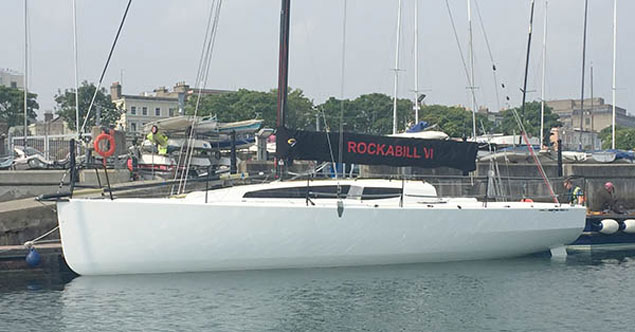 Modern chainplates – as seen here on Paul O’Higgins’ JPK 10 80 Rockabill VI – tend to be minimalist. Photo Afloat.ie
Modern chainplates – as seen here on Paul O’Higgins’ JPK 10 80 Rockabill VI – tend to be minimalist. Photo Afloat.ie
But modern boat-building in carbon and composites has become so clever and weight-conscious that everything in a new boat is doing at least three things at once. Innovative designers find ways of carrying the loads on sections which also serve as part of the accommodation layout, while hiding the fundamental nature of the real work being done.
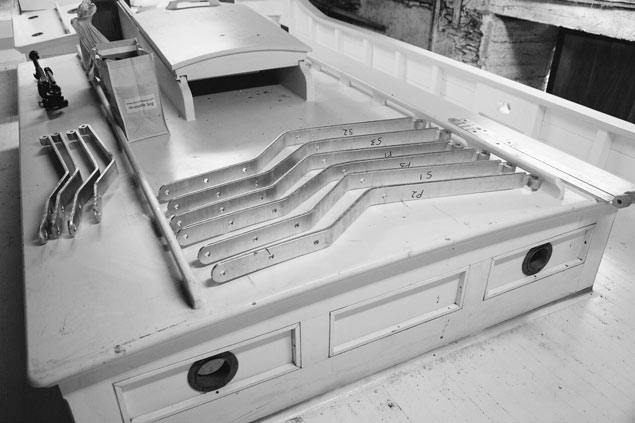 The total Ilen collection, traditionally galvanized. They may look identical, but they’re not. Photo: Gary MacMahon
The total Ilen collection, traditionally galvanized. They may look identical, but they’re not. Photo: Gary MacMahon
 They started with the two starboard mizzen chainplates – and it took most of a day before they reckoned they were on the right track. Photo: Gary MacMahon
They started with the two starboard mizzen chainplates – and it took most of a day before they reckoned they were on the right track. Photo: Gary MacMahon
However, when the 56ft ketch Ilen was being built by Tom Moynihan and his shipwrights in Baltimore back in 1926, the function of the simple wrought steel chainplates was to transfer the load as visibly as possible over a significant section of the hull, with the chainplates uncompromisingly attached externally to minimise the chance of leaks.
Yacht builders naturally inclined to have their chainplates fitted internally, as that looked so much neater. But Ilen was of a traditional no-nonsense concept, and far from making the chainplates something to be invisible, the blacksmith of Baltimore crafted them to be simple and highly visible works of art.
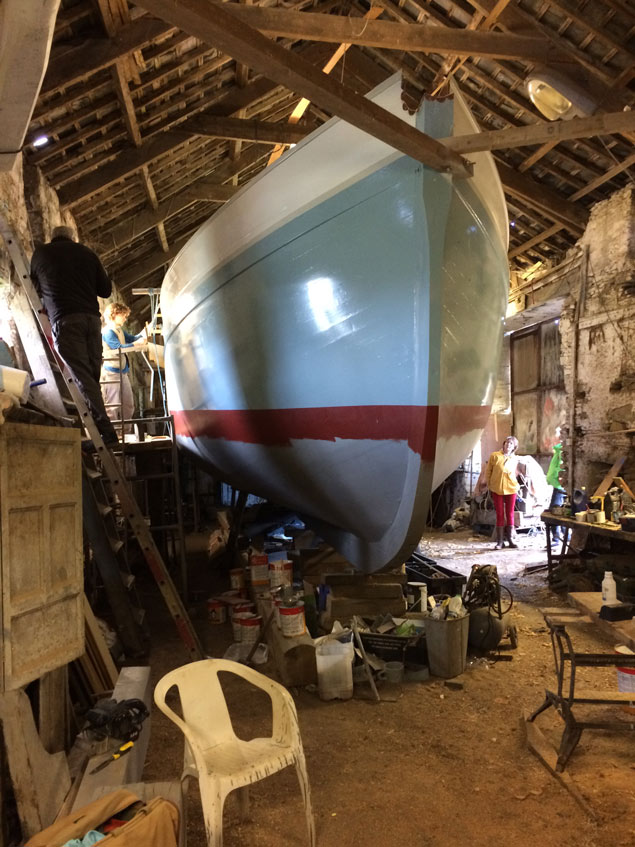 Ilen serenely in waiting as her starboard mainmast chainplates are fitted. Photo: Michael Boyd
Ilen serenely in waiting as her starboard mainmast chainplates are fitted. Photo: Michael Boyd
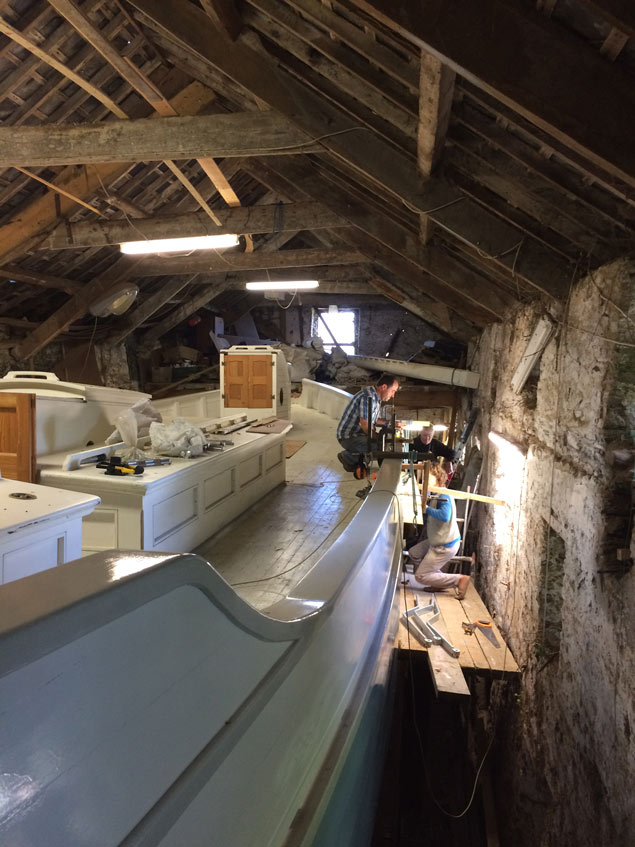 It may look peaceful in the Old Cornstore, but you have only one chance to get this job right. Photo: Michael Boyd
It may look peaceful in the Old Cornstore, but you have only one chance to get this job right. Photo: Michael Boyd
Yet their seeming simplicity is itself a blind. The chainplates come up over timber channels which guide their load-carrying section clear – though only just – of the bulwarks. It all has to be worked to a very fine tolerance, as Liam Hegarty and his team discovered in recent days in the Old Cornstore at Oldcourt where Ilen’s restoration is shaping up, and the new chainplates – made this time round by specialist Colin Frake – have been fitted in a painstaking process.
Definitely not a job to be rushed. You get only one chance of marrying the chainplates, channels and hull to perfection.
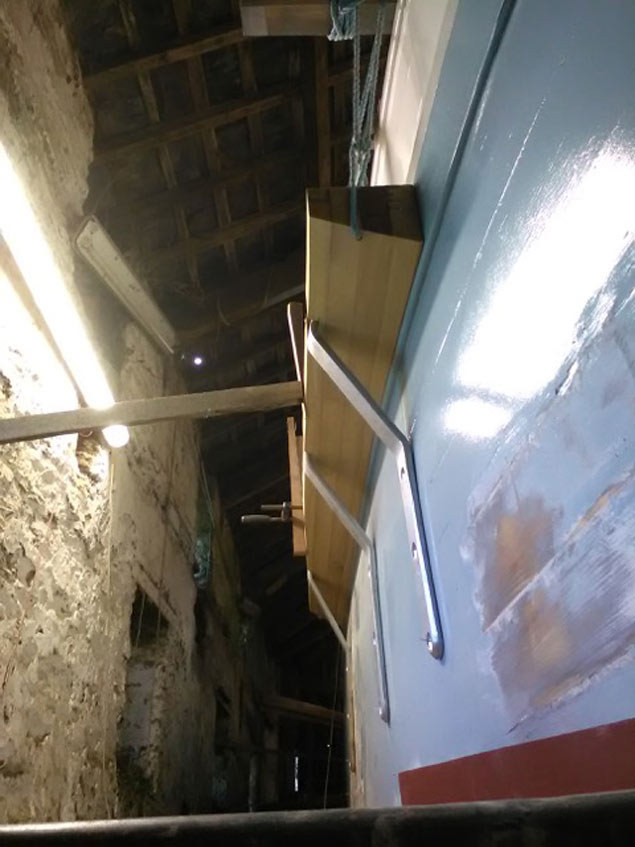 Still work in progress. The channels may need a bit of further shaping before that lower curve is properly supported. Photo: James Madigan
Still work in progress. The channels may need a bit of further shaping before that lower curve is properly supported. Photo: James Madigan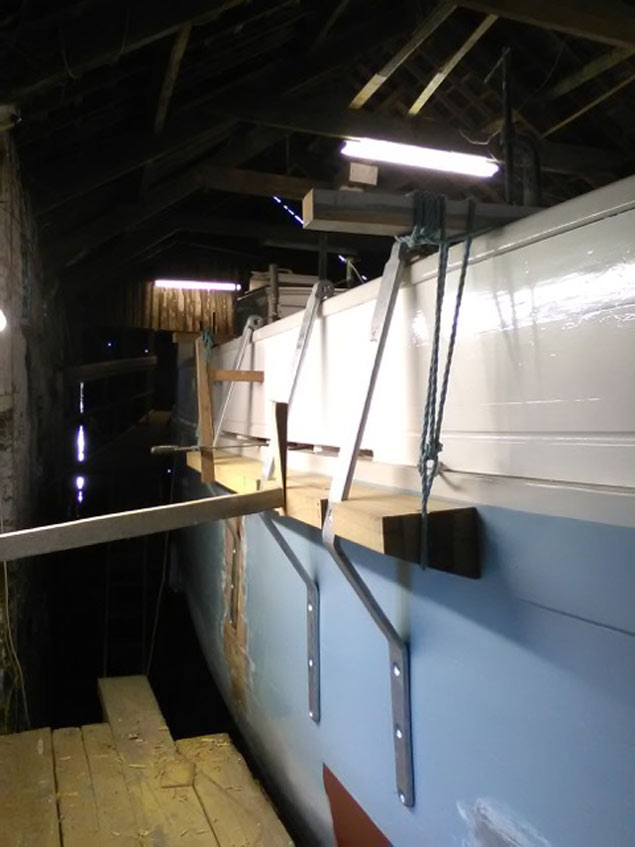 Once they’re finally fitted, the condition of the new chainplates can be regularly assessed. Note how the line of the upper part carries the rigging just clear of the bulwarks. Photo: James Madigan
Once they’re finally fitted, the condition of the new chainplates can be regularly assessed. Note how the line of the upper part carries the rigging just clear of the bulwarks. Photo: James Madigan





























































